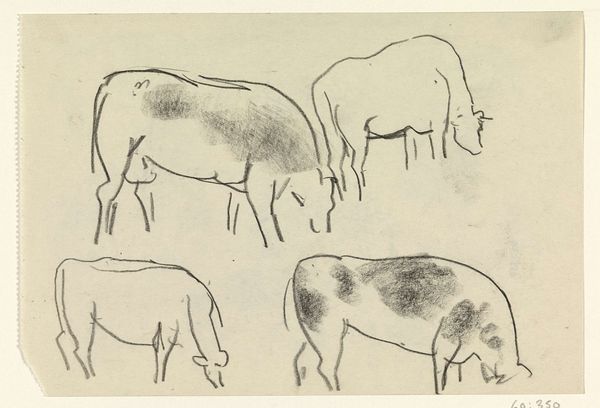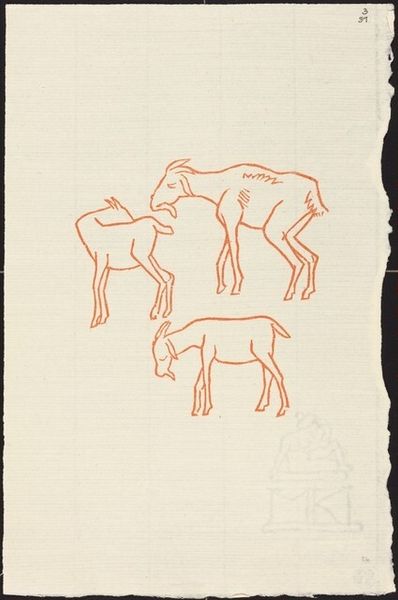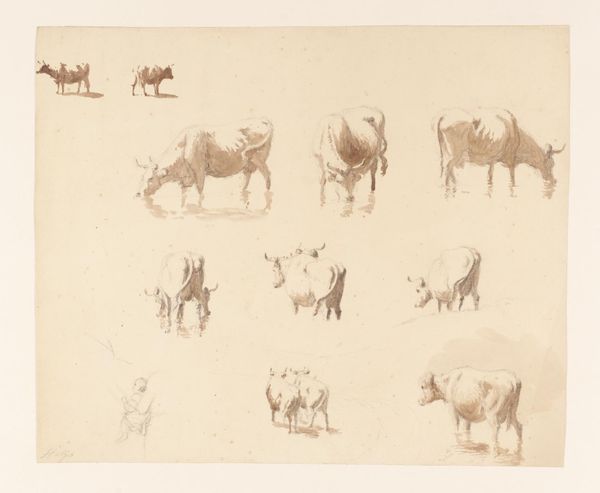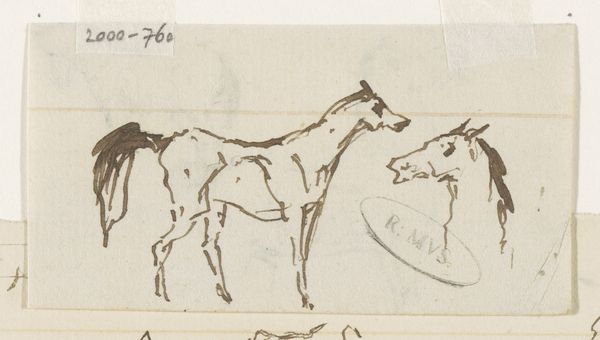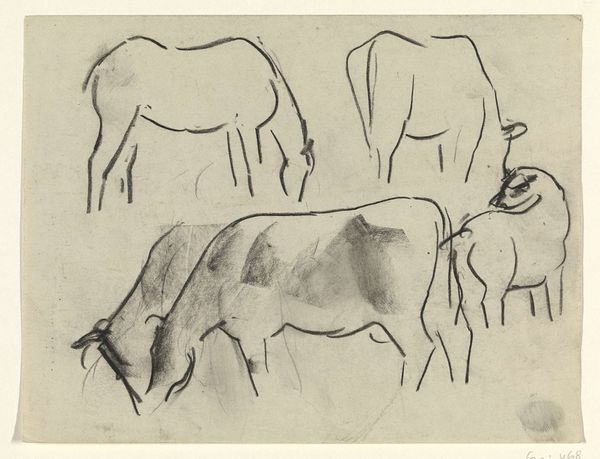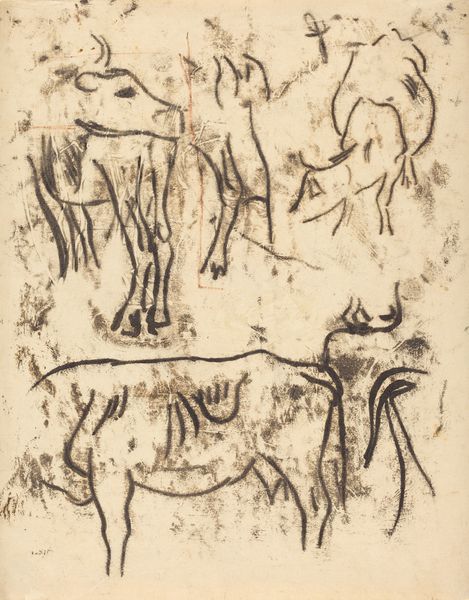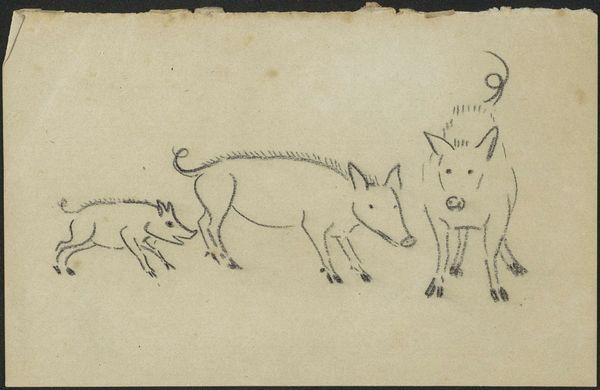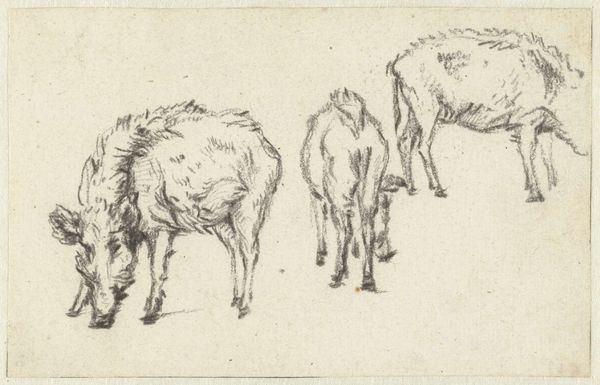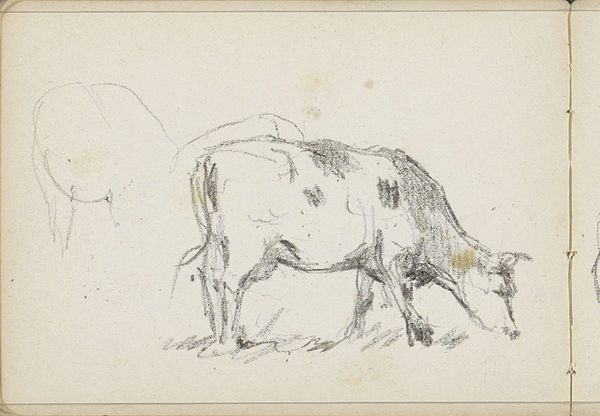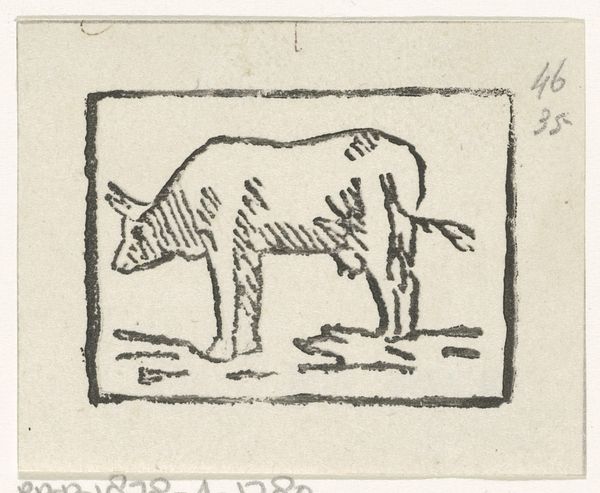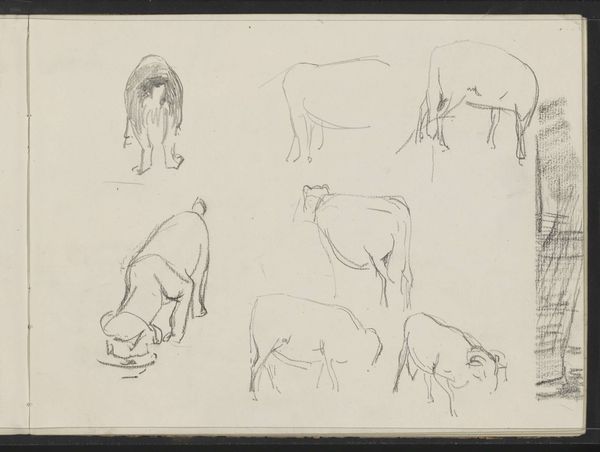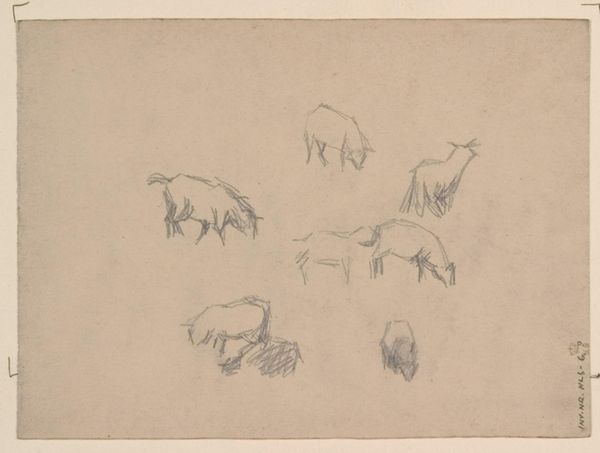
drawing, paper, ink, pen
#
drawing
#
pen sketch
#
landscape
#
figuration
#
paper
#
ink
#
line
#
pen
#
realism
Dimensions: height 120 mm, width 174 mm
Copyright: Rijks Museum: Open Domain
Curator: Welcome. Here we have "Herten," a pen and ink drawing on paper created around 1904-1906 by Gerrit Willem Dijsselhof. It’s part of the Rijksmuseum's collection. Editor: It strikes me as incredibly fragile, even though it's just ink on paper. There’s something fleeting about the sketch-like quality that really speaks to the vulnerability of the animals represented. Curator: It’s interesting you say that. The image itself, although a seemingly simple depiction of deer, carries significant weight when considering Dijsselhof’s broader oeuvre and the context of its time. The deer themselves symbolize gentleness, nature, and the inherent connection humans have historically held with the wild. Editor: But that connection has historically been one of domination and control, hasn't it? Looking at this, I can’t help but consider our relationship with animals now, the exploitation within factory farming, the devastation of natural habitats… does this pastoral scene function as a sort of elegy for a lost ideal? Curator: Perhaps. Remember, in the early 20th century, Europe was rapidly industrializing. There was a yearning for the pre-industrial era, seen as a time of greater harmony. The image of deer, in that cultural context, taps into that romanticized longing. Think of it as a cultural memory, of a relationship with the land increasingly displaced by urbanization. Editor: So, a counter-narrative? That makes me think about how images like this can become loaded. Deer often represent innocence, purity, even a kind of naive grace. But how does that ideal function within oppressive structures? The white-tailed deer as a symbol of idealized American masculinity used in marketing for example—there’s a complicated lineage here. Curator: Precisely. The symbol of the deer itself is incredibly adaptable, historically and culturally. It has been used in the service of very different ideologies. Dijsselhof captures them here with delicate and minimal lines, and whether consciously or unconsciously, that minimal quality allows space for diverse interpretations, down through generations. Editor: I’m struck by how contemporary concerns filter my experience. It really shows how deeply implicated art is within social, ethical and political spheres. I leave feeling provoked by the simplicity of the rendering but alert to the rich layers of symbolism and history surrounding it. Curator: Agreed. And perhaps by engaging in the dialogue, we continue to expand its symbolic landscape, seeing it with new perspectives for a more comprehensive understanding.
Comments
No comments
Be the first to comment and join the conversation on the ultimate creative platform.


